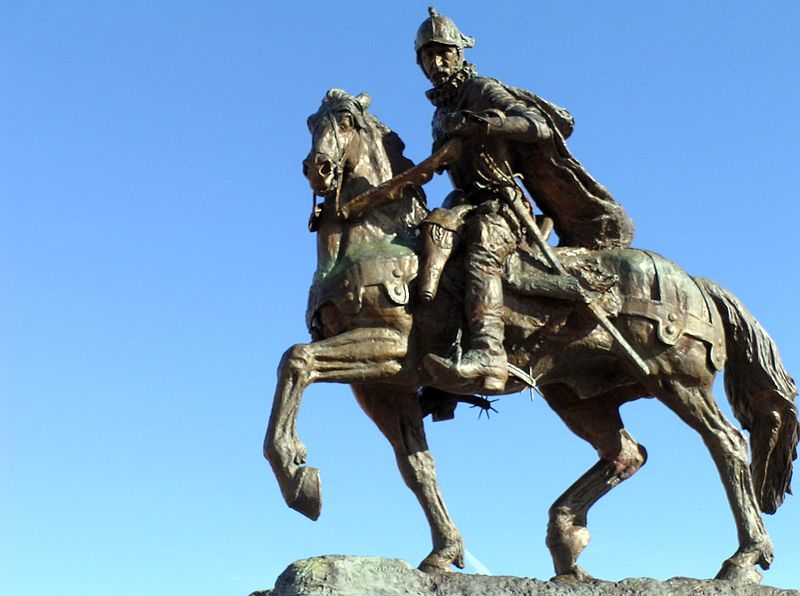We are all familiar with the wave of Basque migration that brought sheepherders to the American West, and rightfully so given the close connection many of us have with those immigrants. However, the American Southwest is literally littered with Basque names from centuries earlier, when Basques were a large part of the conquistadors that swept through the Americas in the name of Spain. In fact, the state now called New Mexico was first settled and governed by the son of a Basque conquistador. Juan de Oñate was the son of Cristóbal de Oñate, who was born in Gipuzkoa. Juan founded the province of Santa Fe de Nuevo Mexico and was the province’s first governor from 1598-1610. He was later exiled from the region because of his use of excessive force.

- Juan’s dad, Cristóbal de Oñate, is known for founding the modern city of Guadalajara in Mexico. He is also credited for founding several other cities in Mexico during the Spanish conquest of Mexico, including Compostela, Tepic, and Zacatecas. During the conquest of Zacatecas, silver mines were discovered that made him and his partners some of the richest people in New Spain. In contrast to many conquistadors, it seems that Cristóbal had a relatively benign disposition, offering “meals to the needy on a daily basis throughout his entire life, and is said to have turned over the proceeds from his encomiendas to improve native villages.” (source: Wikipedia)
- Cristóbal was a descendant of the House of Haro, a powerful family that was deep in Spanish politics. Because of their support of the policies of Alfonso VI of Castile, Íñigo López became the first Lord of Bizkaia in around 1040. It was during his time as Lord of Bizkaia that the fueros were originally granted to the province, in 1051 by the king García Sánchez III of Navarre.
- Juan himself is most infamous for his actions during the Acoma War. As his soldiers were trying to wrest supplies from the people of Acoma Pueblo, supplies the Acomas needed for the winter, 11 soldiers were killed. In retaliation, Juan ordered the pueblo destroyed. In what has become known as the Acoma Massacre, his forces killed between 800-1000 Acoma died. Those who survived were placed on trial. All Acoma older than 12 years old were enslaved for 20 years and all men older than 25 years old (a total of 24 men) had a foot amputated.
- After several expeditions, including one where he tried to find Quivira, the fabled city of gold, Juan returned to New Mexico. He was summoned to Mexico City where he was tried and convicted of, amongst other things, extreme cruelty to both natives and colonists. He was banished from New Mexico for life. He eventually returned to Spain where he lived the rest of his days.
- Juan is still a controversial figure. While some celebrate him for his role in establishing what is now the state of New Mexico and many of the cities within it, he is also vilified for his treatment of, in particular, the Acoma. In 1998, a statue in his honor was erected in Alcalde, New Mexico, to celebrate the 400th anniversary of his arrival. One of his feet was cutoff in protest by an unknown group.
Primary source: Wikipedia.

